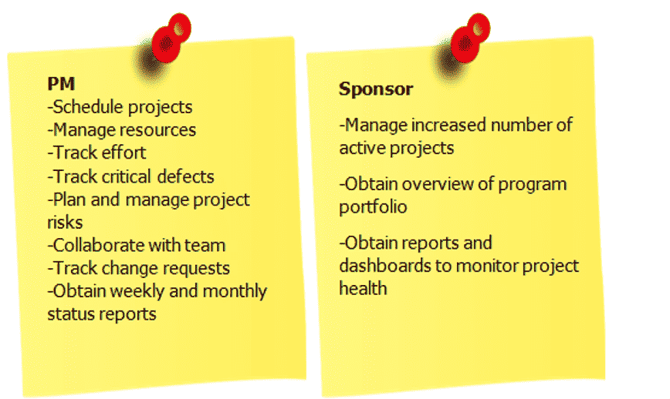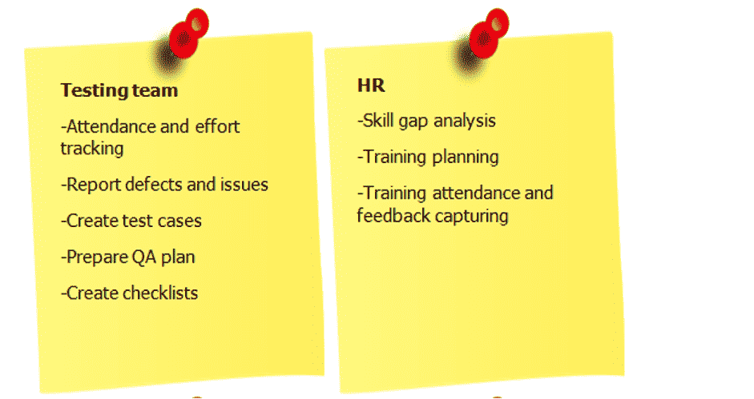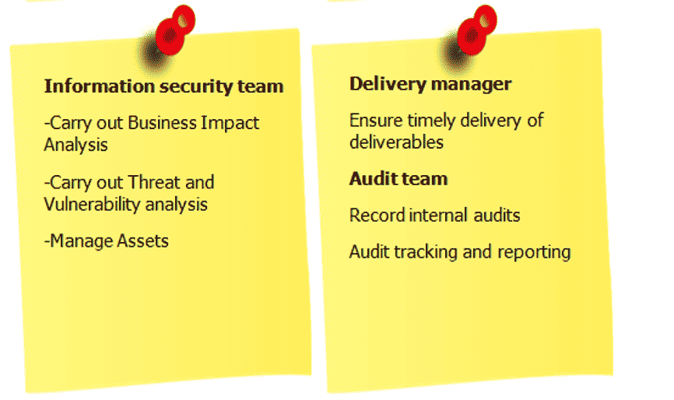10 Ways to Leverage Collaborative Games For Eliciting Requirements

Introduction
Step into the world of collaborative games, where business analysts unlock the secret to effective requirements elicitation. Picture a room filled with laughter, excitement, and intense collaboration as teams come together to solve challenges and uncover valuable insights. Collaborative games have emerged as a powerful tool for businesses seeking to gather their stakeholders' creative requirements.
In this blog post, we will explore the fascinating realm of collaborative games and how they can assist business analysts in their quest for gathering requirements. We'll delve into the history of these games, discuss when they should be used, explore their limitations, and, most importantly, reveal ten ways you can leverage them effectively in your projects. So, sit back, grab your game controller (metaphorically speaking), and let's dive deep into the world of collaborative games to elicit requirements!
What are Collaborative games?
Collaborative games are interactive activities that bring together a group of individuals to work towards a common goal. Unlike traditional single-player or competitive games, collaborative games emphasize teamwork, communication, and problem-solving. These games create an environment where participants actively engage with each other to overcome challenges and achieve shared objectives.
At the heart of collaborative games is the idea of collective intelligence - leveraging the diverse perspectives and skills of the team members to arrive at better solutions. By fostering collaboration, these games unlock creativity and encourage out-of-the-box thinking. They provide a platform for stakeholders from various backgrounds and roles to come together and share their knowledge, ideas, and experiences.
These games can take many forms - from physical board games like "Pandemic" or "Escape Room" to digital platforms such as online multiplayer video games or virtual reality simulations. The key element is that they require active participation from all players, who must communicate effectively, strategize collectively, and make decisions collaboratively.
In the context of business analysis, collaborative games hold immense value. They break down barriers between stakeholders by creating a fun and inclusive atmosphere where everyone's input is valued equally. Through gameplay scenarios that mirror real-world situations or project requirements, these activities allow analysts to observe how different individuals approach problem-solving while uncovering hidden insights along the way.
By incorporating elements such as time constraints or resource limitations into these game scenarios, business analysts can simulate realistic conditions faced in projects which help them understand potential challenges early on in the requirement-gathering process.
Collaborative Games offer an engaging alternative approach for eliciting requirements by promoting effective communication among stakeholders whilst fostering creativity and innovation within teams leading businesses towards successful outcomes.
How Collaborative Games assists business analysts
Collaborative games can be an invaluable tool for business analysts, providing them with a unique and interactive way to gather stakeholder requirements. These games encourage active participation and engagement, fostering open communication and collaboration among team members.
One of the key benefits of using collaborative games is that they allow business analysts to tap into the collective knowledge and expertise of the group. By involving everyone in the process, different perspectives can be shared, leading to more comprehensive and well-rounded requirements.
Additionally, collaborative games help break down barriers between stakeholders by creating a relaxed and informal environment. This can lead to more honest and transparent conversations, as participants feel comfortable expressing their thoughts and ideas without fear of judgment or criticism.
Moreover, these games promote creativity and innovation. They challenge participants to think outside the box, encouraging them to come up with new ideas or solutions that may not have been considered otherwise. This can lead to breakthrough insights that drive the development of innovative products or services.
Furthermore, collaborative games provide a structured framework for eliciting requirements. They guide discussions toward specific goals or objectives while keeping participants focused on what needs to be achieved. This helps prevent tangents or unrelated topics from derailing the conversation, ensuring that valuable time is spent gathering relevant information.
In addition to these benefits for business analysts themselves, collaborative games also create a sense of ownership amongst stakeholders. When participants actively contribute their ideas during gameplay sessions, they are more likely to feel invested in the final outcome. This leads to increased stakeholder buy-in throughout the project lifecycle.
Collaborative games offer an effective approach for business analysts seeking efficient ways to elicit stakeholder requirements. By leveraging this interactive method of engagement, analysts can harness collective intelligence while promoting creativity and building strong relationships with stakeholders along the way.
History of Collaborative Games
Collaborative games have a long and fascinating history that dates back centuries. While the term "collaborative game" may be relatively new, the concept of people coming together to play and solve problems is as old as human civilization. One example of early collaborative games can be found in ancient Greece, where philosophers like Socrates engaged in dialogue-based activities known as dialectic. These interactive discussions allowed participants to explore ideas, challenge assumptions, and collectively arrive at a deeper understanding.
In more recent times, collaborative games have gained popularity in various fields, including business analysis and requirements elicitation. Group exercises and workshops have become integral to gathering information from stakeholders and ensuring their active participation throughout the process. The evolution of technology has also played a significant role in shaping the landscape of collaborative games. With the advent of digital platforms, virtual brainstorming sessions, and online collaboration tools have made it easier for teams to work together remotely.
Today, a wide range of collaborative games are available specifically designed for business analysts to facilitate requirements elicitation. These games incorporate elements such as problem-solving challenges, role-playing scenarios, and interactive simulations to engage stakeholders effectively.
As businesses continue to recognize the value of involving stakeholders in requirement-gathering processes through collaborative games, we can expect further advancements in this field. By leveraging these innovative approaches, organizations can enhance team dynamics while achieving more accurate outcomes for their projects.
When to use Collaborative games
Collaborative games can be a powerful tool for business analysts in various scenarios. One prime instance where collaborative games are beneficial is during the requirements-gathering phase of a project. These games provide a structured and interactive environment that encourages active participation from stakeholders, fostering collaboration and creativity.
Additionally, collaborative games offer an effective approach when dealing with complex or ambiguous requirements. Bringing stakeholders together in a game-like setting makes clarifying expectations and uncovering hidden needs easier. This allows the business analyst to gain deeper insights into what the stakeholders truly want, ensuring that requirements are accurately captured.
Another situation where collaborative games shine is when working with diverse stakeholder groups. Games have the ability to bridge gaps between different perspectives and encourage open communication among participants. This is especially valuable when multiple departments or teams are involved in a project, as it promotes cross-functional understanding and alignment.
Furthermore, collaborative games can be employed when traditional elicitation techniques may not yield the desired results. For example, if there is resistance from certain stakeholders or if meetings tend to become unproductive due to conflicts or disengagement, introducing gamification elements can inject energy and motivation into the process.
Knowing when to leverage collaborative games depends on factors such as project complexity, stakeholder dynamics, and potential challenges faced during requirement elicitation. By strategically incorporating these tools at appropriate times throughout the analysis lifecycle, business analysts can enhance their effectiveness in capturing accurate requirements while fostering collaboration among stakeholders.
Limitations of Collaborative Games
Collaborative games have proven to be a valuable tool for business analysts when it comes to eliciting requirements. However, like any other technique, they come with certain limitations that must be acknowledged and addressed.
One limitation of collaborative games is the potential for dominating personalities or group dynamics to overshadow the contributions of others. In some cases, certain individuals may assert their opinions more strongly, leading to an imbalance in ideas and potentially skewing the requirements-gathering process. It's important for facilitators to actively manage such situations and ensure equal participation from all team members.
Another challenge with collaborative games is the time commitment required. While these activities can be highly effective in generating insights and fostering collaboration, they often take longer than traditional requirement-gathering techniques. This can pose difficulties when working within tight project timelines or when stakeholders are not able to dedicate significant amounts of time to game-based activities.
Additionally, collaborative games may not always capture complex or technical requirements adequately. These games tend to focus more on user-centric aspects rather than diving deep into technical specifications or intricate system functionalities. In such cases, supplementary techniques like interviews or workshops might be necessary to complement the information gathered through collaborative gaming sessions.
Furthermore, it's essential to note that not all stakeholders may feel comfortable participating in a game-based approach. Some individuals might have reservations about engaging in playful activities during professional discussions or prefer more formal methods of requirement elicitation. Sensitivity towards individual preferences and adapting strategies accordingly is crucial for successfully implementing these techniques.
Despite these limitations, collaborative games remain a powerful tool for business analysts seeking innovative ways to elicit requirements effectively while promoting teamwork and engagement among stakeholders.
How to Leverage Collaborative Games For Eliciting Requirements
Collaborative games can be a powerful tool for business analysts when it comes to eliciting requirements. Here are ten ways you can leverage these games to gather the necessary information and insights:
- Facilitate brainstorming sessions: Collaborative games provide a structured platform for stakeholders to share their ideas, ensuring no valuable input is left unheard.
- Encourage collaboration: Participating in interactive activities makes team members feel more engaged and motivated to contribute towards requirement gathering.
- Enhance communication: Games promote open dialogue among stakeholders, helping them articulate their needs and preferences more effectively.
- Uncover hidden requirements: Through gameplay, participants often uncover additional requirements that may not have been considered during traditional meetings or interviews.
- Foster creativity: Collaborative games encourage out-of-the-box thinking, allowing stakeholders to explore new possibilities and innovative solutions.
- Prioritize requirements: Games facilitate discussions around priorities by forcing participants to make decisions within a limited timeframe or resources.
- Identify dependencies: By working together in a game setting, stakeholders become aware of interdependencies between different requirements and processes.
- Build consensus: When conflicts arise during gameplay, they can be resolved through consensus-building exercises, leading to a more cohesive understanding of the required features or functionalities.
- Test assumptions early on: Collaborative games enable teams to test assumptions about user needs before investing time and resources in development efforts.
- Capture non-functional requirements: While functional requirements are usually easier to capture through traditional methods like interviews or surveys, collaborative games offer an opportunity for stakeholders to express non-functional aspects such as usability or performance expectations in a more tangible way.
By leveraging collaborative games throughout the requirement elicitation process, business analysts can tap into the collective knowledge of stakeholders while fostering creativity and enhancing communication within the team dynamics.
Collaborative games Worked out example
Collaborative Games on Needs of Governance, Risk, and Compliance (GRC) management system.
Key stakeholders for the Governance, Risk, and Compliance (GRC) management system were summoned to collaborate and identify the need for Governance, Risk, and Compliance (GRC) management system- i.e., who will be the main users of the system and the high-level features required by each user group. The affinity map created as part of this session can be seen below:




Conclusion
Collaborative games have proven to be a valuable tool for business analysts in the process of requirements elicitation. By engaging stakeholders and team members in a fun and interactive way, these games provide an opportunity to gather insights, foster collaboration, and ensure that all perspectives are considered.
Through the history of collaborative games, we can see how they have evolved from simple icebreakers to sophisticated tools designed specifically for requirements gathering. Business analysts can leverage this rich tradition by selecting the right game for their needs and adapting it to suit their unique context.
While collaborative games offer many benefits, it's essential to be aware of their limitations. They may not always be suitable for every project or stakeholder group. It is necessary to consider factors such as time constraints, cultural differences, and individual preferences when deciding whether to incorporate collaborative games into your requirements elicitation process.
To leverage collaborative games effectively for eliciting requirements:
- Set clear objectives: Clearly define what you aim to achieve through the game.
- Choose appropriate games: Select games that align with your goals and target audience.
- Prepare materials: Gather all necessary materials before conducting the game.
- Facilitate effectively: Ensure smooth facilitation by providing clear instructions and guidance throughout the game.
- Encourage participation: Create an inclusive environment where everyone feels comfortable contributing their ideas.
- Document insights: Record key findings and observations during or immediately after playing the game.
- Analyze results: Use the information gathered from collaborative games as input for further analysis and decision-making processes.
- Communicate effectively: Share outcomes with stakeholders promptly so that they can provide feedback or clarification if needed
- Iterate if required: If additional rounds or modifications are necessary based on stakeholder feedback, be ready to adjust plans accordingly
- Evaluate success: Reflect on how effective each game was in achieving its intended purpose, and learn from each experience.
By leveraging these strategies, business analysts can unlock the full potential of collaborative games and enhance the requirements elicitation.
You May Also Like
These Related Stories

Interface Analysis with Worked Out Example

Decision analysis - What, Why, and How



Comments (16)